To Angelenos, Joshua Tree is a mystical expanse of desert. Worshipped as a place to escape the noise and busyness of the movie capital. Leaving the deodorant, the hair brush, and their worries far away, it is a place loved by rock climbers, stargazers, hikers, the spiritual, the hippie, the motorcycler and the off-roader.
So many people from so many different walks of life love this desert preserve that protects thousands of acres of diverse desert landscape. Many people don’t see the magical sides of this park, but I for one have drunk the Koolaid and here are some of the beautiful things you can see if you take the time to explore this National Park.
Please make sure to follow all park rules and respect the wildlife, flora, and trails at Joshua Tree. Also, this post may contain affiliate links that help me earn a small commission at no cost to you if you choose to click and make a purchase. Thank you for helping support my blog!
How to Get to Joshua Tree National Park
Joshua Tree National Park is located just 2 1/2 hours from Los Angeles. Making it one of the closest National Parks. Less than an hour from the ritzy party town of Palm Springs means you can stay in a poolside hotel, shop the outlets and explore the desert all in one day.
The park has three different entrances and can be accessed from Interstate 10 in the south, or along HIghway 62 in either Joshua Tree Village or Twenty Nine Palms.
The busiest entrance is its Western Entrance in Joshua Tree, 5 miles south from the junction of Highway 62 and Park Boulevard. This is the most convenient entrance for travelers coming from Los Angeles and wanting to see most of the points of interest on the drive in.
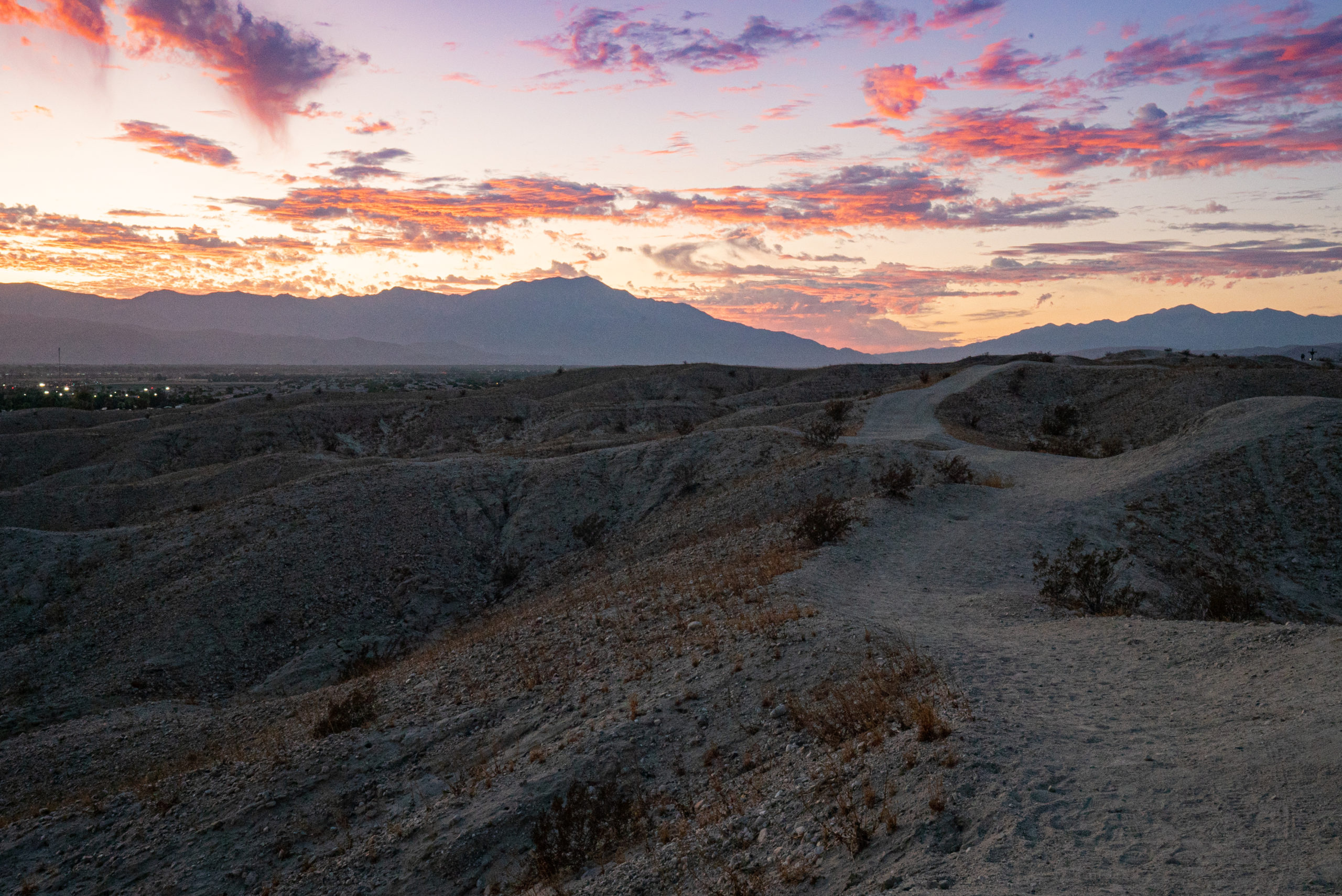
The expansive park is made up of both the Mojave and Colorado deserts with over 800,000 acres. It is a land of varying desert landscapes, from rows of Joshua Trees to towering boulders, miles of wildflowers and plenty of wildlife. It first became a national monument in 1936 under President Roosevelt, then was finally established as a national park in 1994.
Joshua Tree National Park History
In the century prior to earning national monument status, this desert was used by ranchers, cowboys, and even gold miners. You can see evidence of that along several trails that take you to old mines, mills, and camps. The most well preserved is the Desert Queen Ranch, also known as Keys Ranch, which you can see on a park ranger guided tour.
When William Keys’ boss died, he was owed back wages and took the ranch property as payment. This site was protected, as it’s a great depiction of what life would have been like back then.
With mining declining and rumblings of this place becoming protected, William Keys and his family had many methods of making money out here, from canning fruits grown in their orchard to having guest cabins and even renting out old equipment to miners.
On a fateful Friday morning in May of 1943, Mr. Keys faced a heated confrontation with his neighbor, Worth Bagley. Keys shot and killed his neighbor in a land access dispute, later being convicted of manslaughter and sentenced to prison. He claimed he acted in self defense and his wife arranged representation by the lawyer who created Perry Mason, Erle Stanley Gardner. When Keys was released from prison, he erected a stone marker at the site of the shooting that reads: “Here is where Worth Bagley bit the dust at the hand of W. F. Keys, May 11, 1943”.
It’s important to understand the backstory and why William Keys was ready to shoot his neighbor on that May morning. In 1936, the Joshua Tree National Monument had been established, surrounding his land and curtailing the grazing of his cattle. He’d been at odds with the federal government over it since. Three of his children had died in early childhood. The vein of gold in the mine had played out long ago. Larger cattle companies dealt unfairly with him. Trespassers and poachers stole his machinery. This sign and the dispute with his neighbor were just another chapter in a long story of hardship.
The NPS eventually took over the ranch and left it exactly how it was, and you can still tour it today.
About Visiting Joshua Tree National Park
Hot summer temperatures make the best time to visit over the winter and spring. It’s a park full of great trails, rock climbing/bouldering, and star gazing. For the best experience, grab a campsite at one of the many campgrounds or head out into the desert for a night under the stars.
Here are some of my favorite things I did at Joshua Tree National Park on my last visit—add these to your itinerary!
Wall Street Mill Hike
My next stop was the short hike out to Wall Street Mill. An easy 2-mile hike to the site of an old gold mill and homestead on the walk, I passed by several old structures, wells, and remnants from the days of mining and ranching that took place here in the desert over a century ago. It takes anywhere from 45 minutes to 2 hours to walk, depending on how often you stop to check out the relics!
Keep your eyes out for the rusty old cars, mining equipment, and beautiful scenery as you hike. The trailhead begins at the Barker Dam area just off Queen Valley Road.
Skull Rock Trail
This aptly-named rock looks just like a skull sinking into the ground, complete with eye sockets! It’s quite a sight and reaching it gives you a chance to hike a short 1.7-mile trail through the park, just across the way from the Jumbo Rocks Campground and amphitheater. As you walk the trail and approach the large rock, think about the geological processes that formed it over thousands of years—rain drops weathering away the granite and pooling up until “eye sockets” formed and created the signature skull appearance.
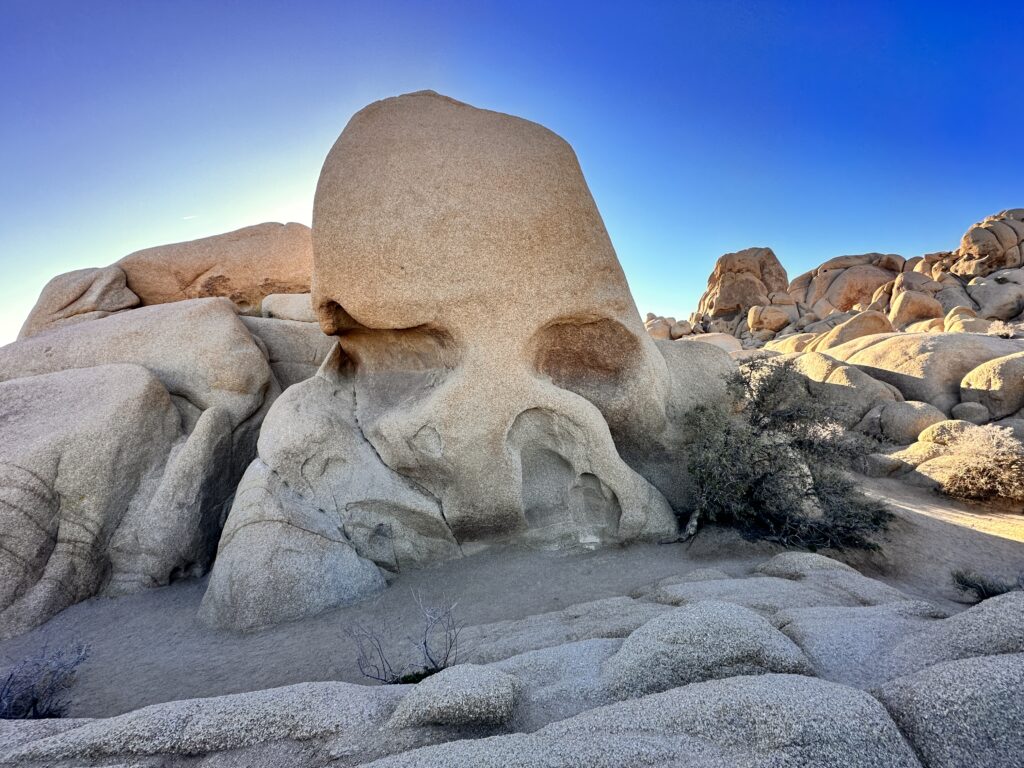
Keys View
Sunrises and sunsets in the park are fantastic, and one of the best places to experience the end of the day is at Keys View. Located on the crest of the Little San Bernardino Mountains, it looks out to the Coachella Valley, and it was WINDY from this viewpoint when I visited. It is often also extremely smoggy in this area a reminder of how dry, dusty, and close you are to the major metropolises of Southern California. Don’t miss this overlook while you’re in the park!
Keys Ranch Tour
In the late 1800s and early 1900s, many people came to this area of desert to look for gold, tend cattle, and start homesteads. One of those people was William “Bill” Keys, who lived here from 1910 to 1964. The guided tour of Keys Ranch is a great way to learn about its history and a lot of the unique plants and wildlife that lives in this part of the high desert as well.
Sign up for a guided walking tour of the historic Keys Ranch to explore this historic ranch from the early 1900s with a ranger telling the time-honored stories of its past.
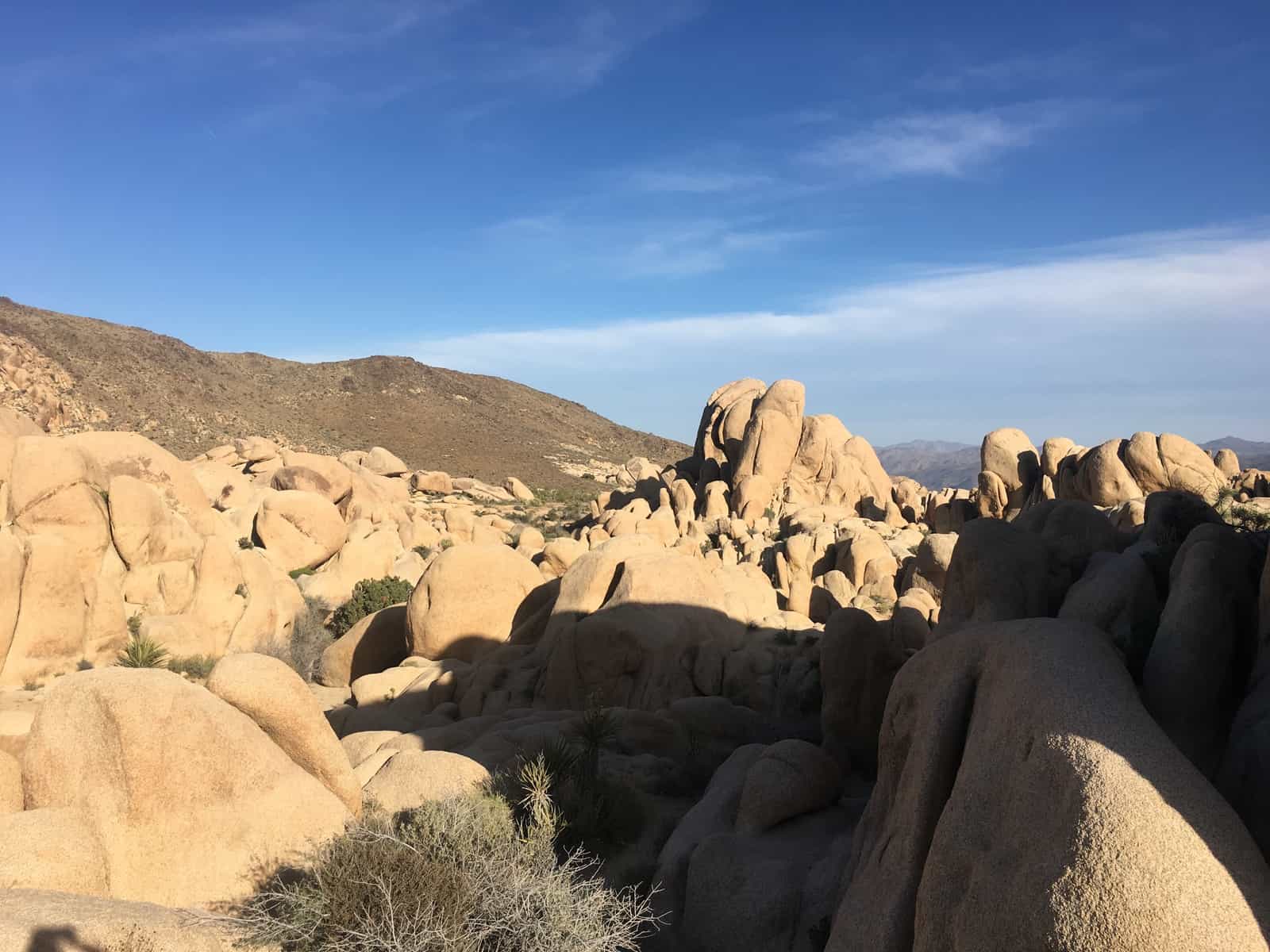
Best Hikes in Joshua Tree
1. Hidden Valley Trail:
- Description: Hidden Valley Trail is a classic Joshua Tree hike, offering a moderate loop through a picturesque valley surrounded by towering rock formations.
- Highlights: Visitors can admire stunning rock formations, spot wildlife such as bighorn sheep and rock climbers, and experience the tranquility of the desert landscape.
- Distance: Approximately 1 mile (1.6 km) loop.
- Difficulty: Easy to moderate.
2. Barker Dam Trail:
- Description: Barker Dam Trail takes hikers on a scenic journey to a historic reservoir built by early cattle ranchers in the area.
- Highlights: Along the trail, hikers can view ancient petroglyphs, observe diverse desert vegetation, and enjoy panoramic views of the surrounding landscape.
- Distance: Approximately 1.5 miles (2.4 km) loop.
- Difficulty: Easy.
3. Ryan Mountain Trail:
- Description: Ryan Mountain Trail offers a more challenging hiking experience, rewarding adventurers with breathtaking panoramic views of Joshua Tree National Park from its summit.
- Highlights: Hikers ascend steadily to the summit, where they are treated to sweeping vistas of the park’s iconic rock formations and expansive desert terrain.
- Distance: Approximately 3 miles (4.8 km) round trip.
- Difficulty: Moderate to strenuous.
4. Lost Palms Oasis Trail:
- Description: Lost Palms Oasis Trail leads hikers through rugged desert landscapes to a hidden palm-filled oasis nestled within the park.
- Highlights: The trail offers opportunities to encounter unique desert flora and fauna, including the California fan palm, and experience the stark beauty of the Colorado Desert.
- Distance: Approximately 7.2 miles (11.6 km) round trip.
- Difficulty: Moderate.
5. Cholla Cactus Garden Nature Trail:
- Description: Cholla Cactus Garden Nature Trail provides visitors with a leisurely stroll through a picturesque landscape dotted with clusters of vibrant cholla cacti.
- Highlights: The trail offers opportunities for photography, birdwatching, and close-up encounters with the park’s iconic cactus species.
- Distance: Approximately 0.25 miles (0.4 km) loop.
- Difficulty: Easy.
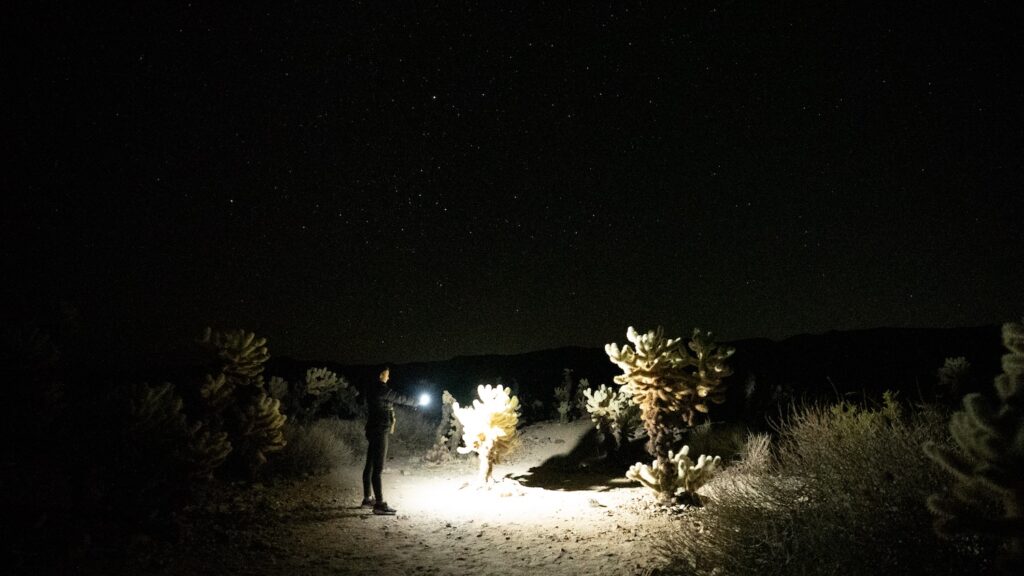
6. Wall Street Mill:
- Description: Short hike to an old gold mill and homestead, leading past wells, mining relics, and amazing history every step of the way. It begins at the Queen Valley Road parking lot, just east of the Barker Dam area.
- Highlights: Look for old cars and equipment on your way to the gold mill while you enjoy this trail, and wear sun protection—shade is minimal.
- Distance: Approximately 2-mile out-and-back trail
- Difficulty: Easy
7. Skull Rock Trail:
- Description: This quick hike is under 2 miles and leads you to a famous rock that has been eroded and weathered to look just like a large skull in the middle of the desert. It’s a popular trail, so get out early if you want smaller crowds.
- Highlights: Follow the main east-west park road to reach this iconic stop and park just across the road from the rock, where the Jumbo Rocks Campground and amphitheater are.
- Distance: Approximately 1.7 miles
- Difficulty: Easy
8. Hall of Horrors Trail:
- Description: Short loop hike through a slot canyon with awesome views of the unique landscapes in Joshua Tree, featuring rock formations and piled-up boulders that will grab your attention as you walk through the otherworldly scene.
- Highlights: Check out the giant boulder stacks in this famous slot canyon, with plenty of chances to scramble up and down rocks. Finding the canyon can be a challenge, but look for the trailhead sign just past the Ryan Mountain parking area.
- Distance: Approximately 0.6-mile loop
- Difficulty: Easy
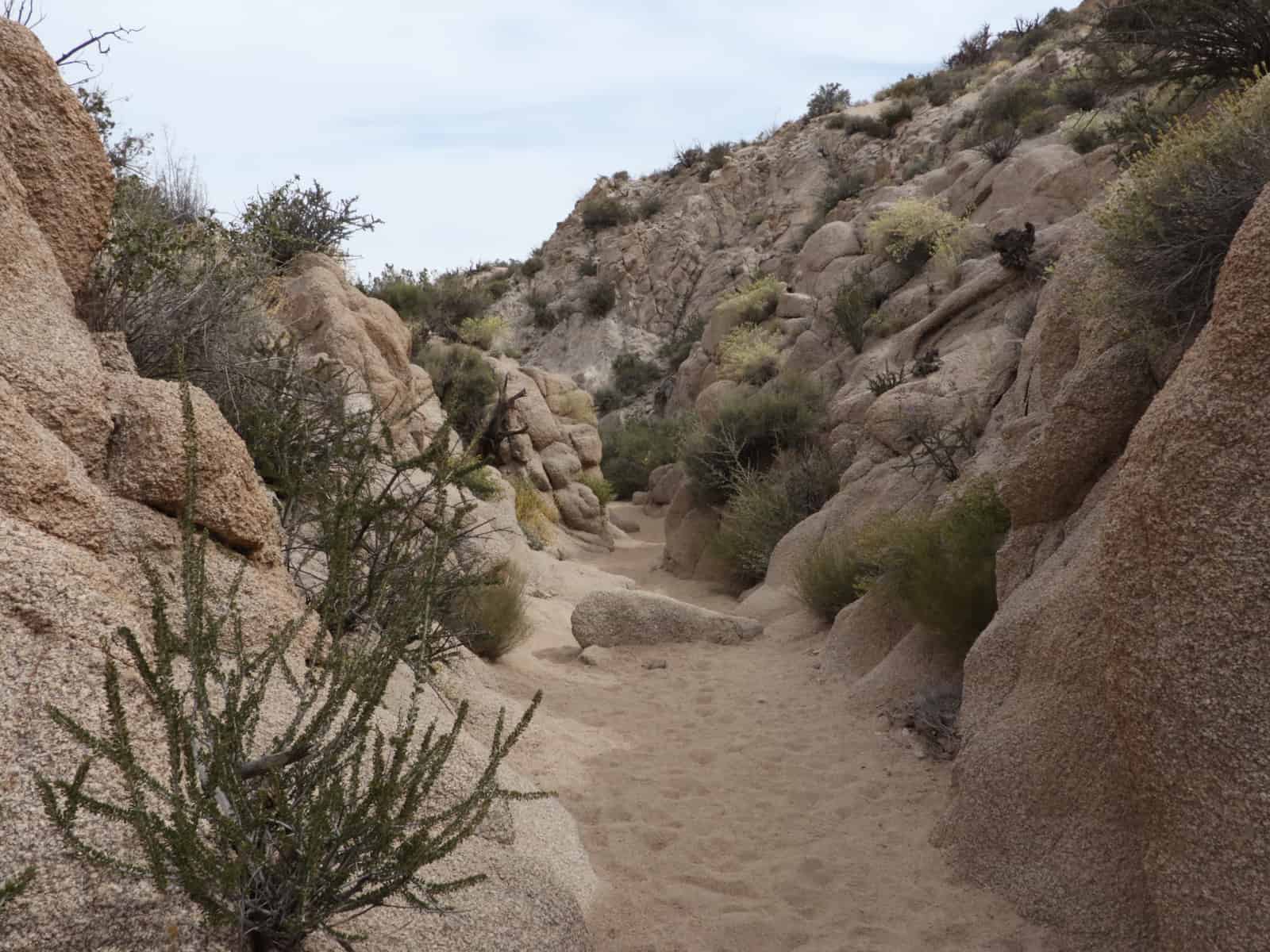
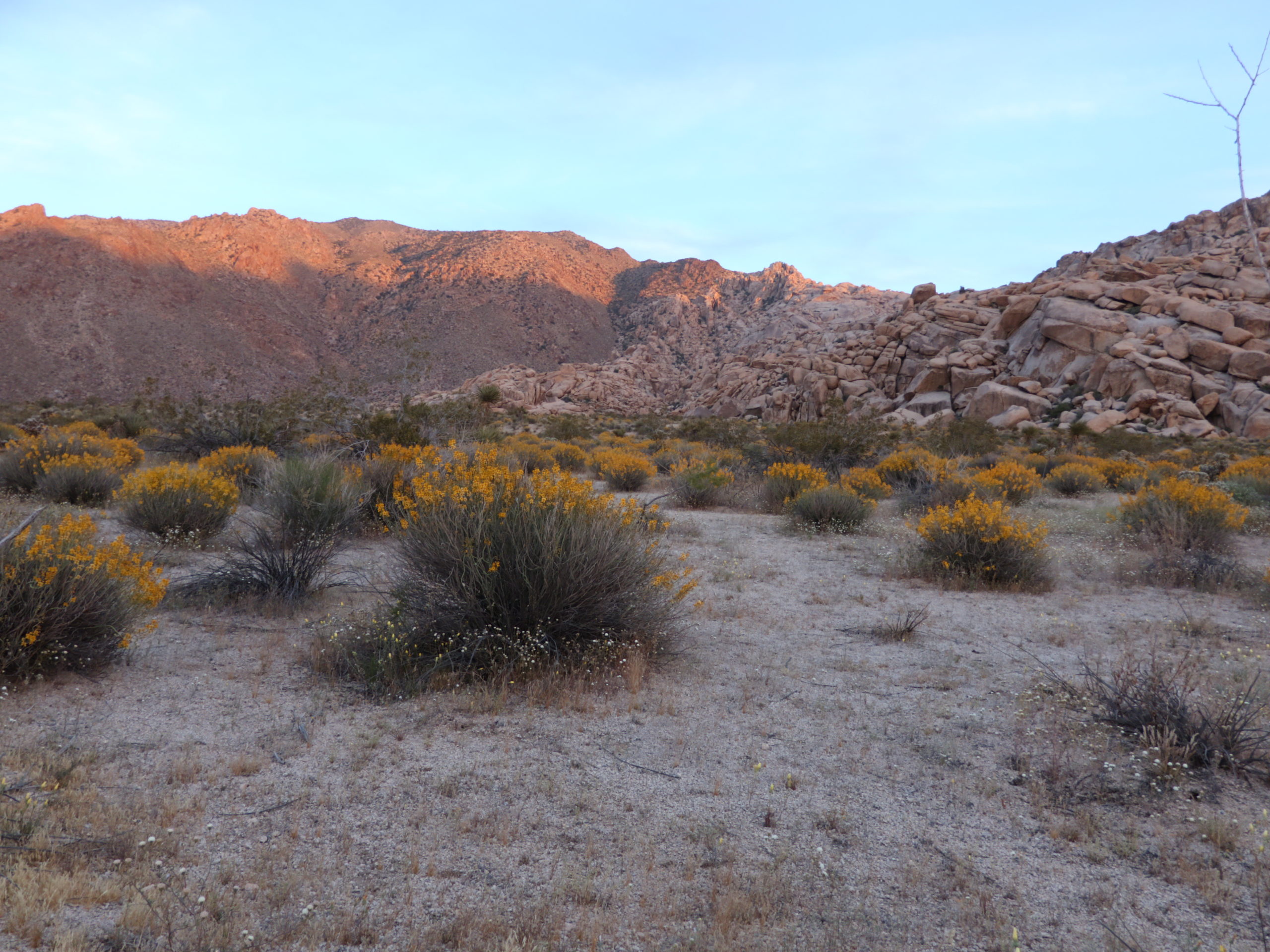
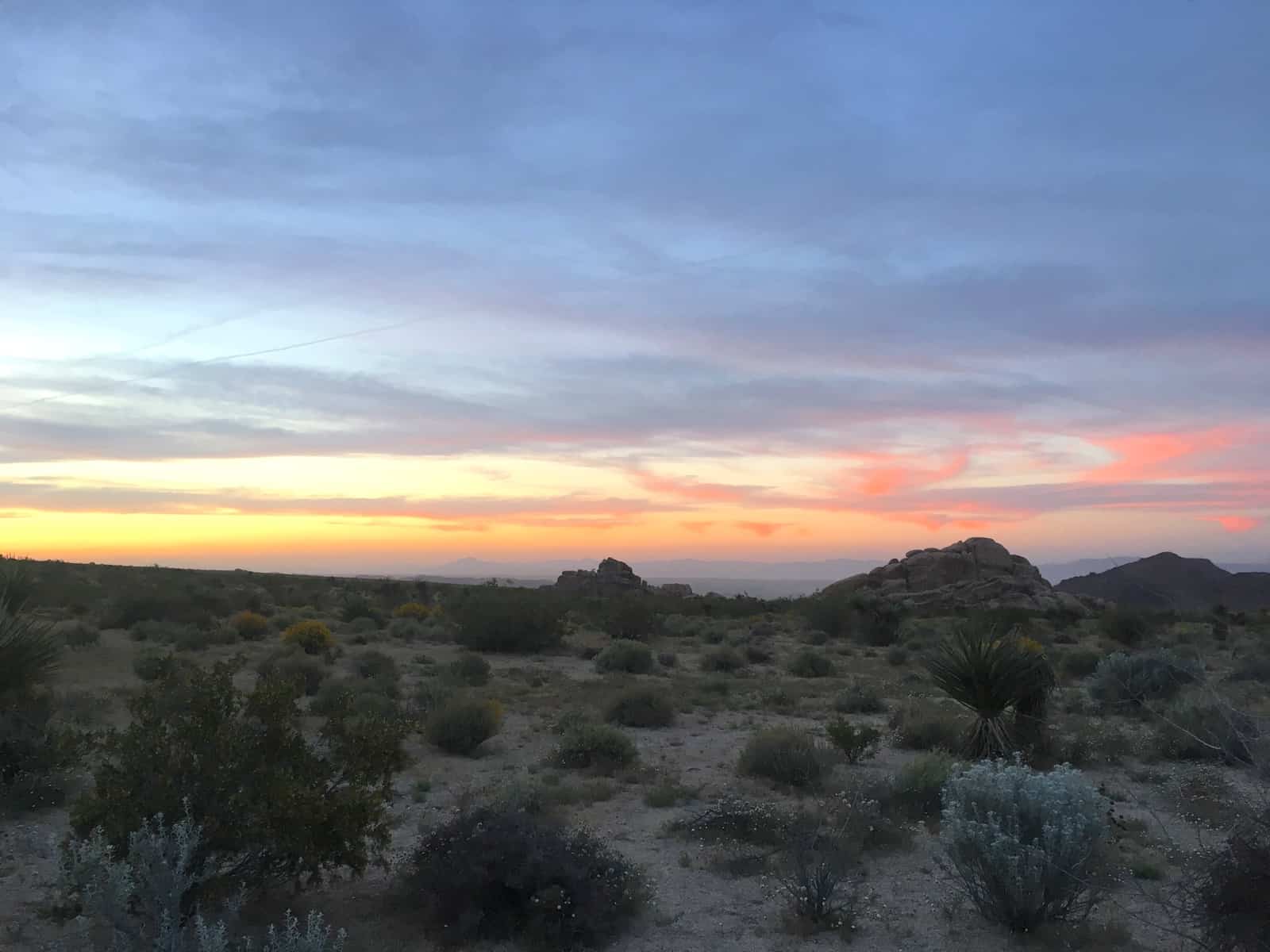
Off-Road Driving and ATV Roads in Joshua Tree
Off-road enthusiasts flock to Joshua Tree and the nearby Anza-Borrego Desert State Park for thrilling adventures along rugged jeep and ATV trails. These expansive desert landscapes offer a playground for drivers of all skill levels, providing a unique perspective of the region that few hikers and park visitors ever experience.
1. Geology Tour Road (Joshua Tree National Park):
- This scenic route winds through Joshua Tree National Park’s diverse terrain, showcasing its geological wonders and iconic Joshua trees.
- Highlights include panoramic views of vast desert vistas, fascinating rock formations, and opportunities for wildlife sightings.
- Drivers can explore the park’s geological history while navigating sandy washes and rocky outcrops along the way.
2. Black Eagle Mine Road (Joshua Tree National Park):
- A historic mining route, Black Eagle Mine Road offers a glimpse into the park’s past with remnants of old mining operations scattered throughout the landscape.
- The trail winds through rugged canyons and rocky terrain, providing drivers with a challenging yet rewarding off-road experience.
- Highlights include abandoned mine shafts, stunning desert scenery, and the chance to spot bighorn sheep and other wildlife.
3. Coyote Canyon (Anza-Borrego Desert State Park):
- Coyote Canyon is a popular off-road destination within Anza-Borrego Desert State Park, offering a variety of trails for exploration.
- Drivers can traverse sandy washes, rocky terrain, and narrow canyons while immersing themselves in the park’s pristine desert wilderness.
- Highlights include seasonal waterfalls, lush palm oases, and stunning views of the surrounding mountains and desert landscape.
4. Fish Creek Wash (Anza-Borrego Desert State Park):
- Fish Creek Wash is a scenic off-road route that meanders through Anza-Borrego Desert State Park’s remote backcountry.
- The trail features towering canyon walls, unique rock formations, and expansive desert vistas, providing drivers with a true sense of adventure and discovery.
- Highlights include the stunning vista at Wind Caves, where wind-carved sandstone formations create otherworldly landscapes against the desert sky.
5. Arroyo Salado Primitive Campground (Anza-Borrego Desert State Park):
- Arroyo Salado Primitive Campground serves as a basecamp for off-road enthusiasts exploring the vast network of trails within Anza-Borrego Desert State Park.
- Campers can enjoy the solitude of the desert while accessing nearby trails such as Arroyo Salado Wash and Elephant Trees Trail.
- Highlights include sweeping views of the surrounding desert, star-filled night skies, and the tranquility of the remote backcountry.
From scenic drives through Joshua Tree’s iconic landscapes to rugged trails in Anza-Borrego’s expansive desert wilderness, off-road enthusiasts can immerse themselves in the natural beauty and rugged terrain of Southern California’s desert parks. With miles of open trails and endless opportunities for exploration, these off-road destinations offer adrenaline-fueled adventures and unforgettable experiences for drivers seeking the ultimate desert escapade.
Camping
If you are ever going to camp at a National Park, Joshua Tree is a great place to try it out. There are eight campgrounds inside Joshua Tree- four of which take reservations and four that are first come first serve, all maintained by the park service.
On my last visit to Joshua Tree, we reserved a spot at the Indian Cove Campground, which is located 13 miles East of Joshua Tree Village. It is situated around large boulders which can be climbed and some beautiful fields of flowering bushes.
Jumbo Rock Campground is another great option, located just across from the entrance from Skull Rock Trail. You’ll have your choice of 124 campsites for individuals and families, but note that reservations are required. Spots tend to book up fast because nearby Skull Rock is so popular.
Save up to 25% on your Spring Break travel costs by booking an RV through RVshare
More Things to Do in Joshua Tree
- Go hiking: I list all my favorite trails in the park to hike below, so pick a few that pique your interest and spend some time taking in the landscapes, scenery, and historic sites around the park.
- Noah Purifoy Outdoor Desert Art Museum: An open-air art and sculpture museum featuring thought-provoking exhibits made from everyday refuse that contrast with the desert surroundings. Stop by on your visit to the park and marvel at the amazing collection!
- World Famous Crochet Musuem: Another unexpected find in the park just east of the Joshua Tree Saloon, this crafty little musuem features crochet works collected by Shari Elf and is one of the coolest roadside stops you’ll find around here.
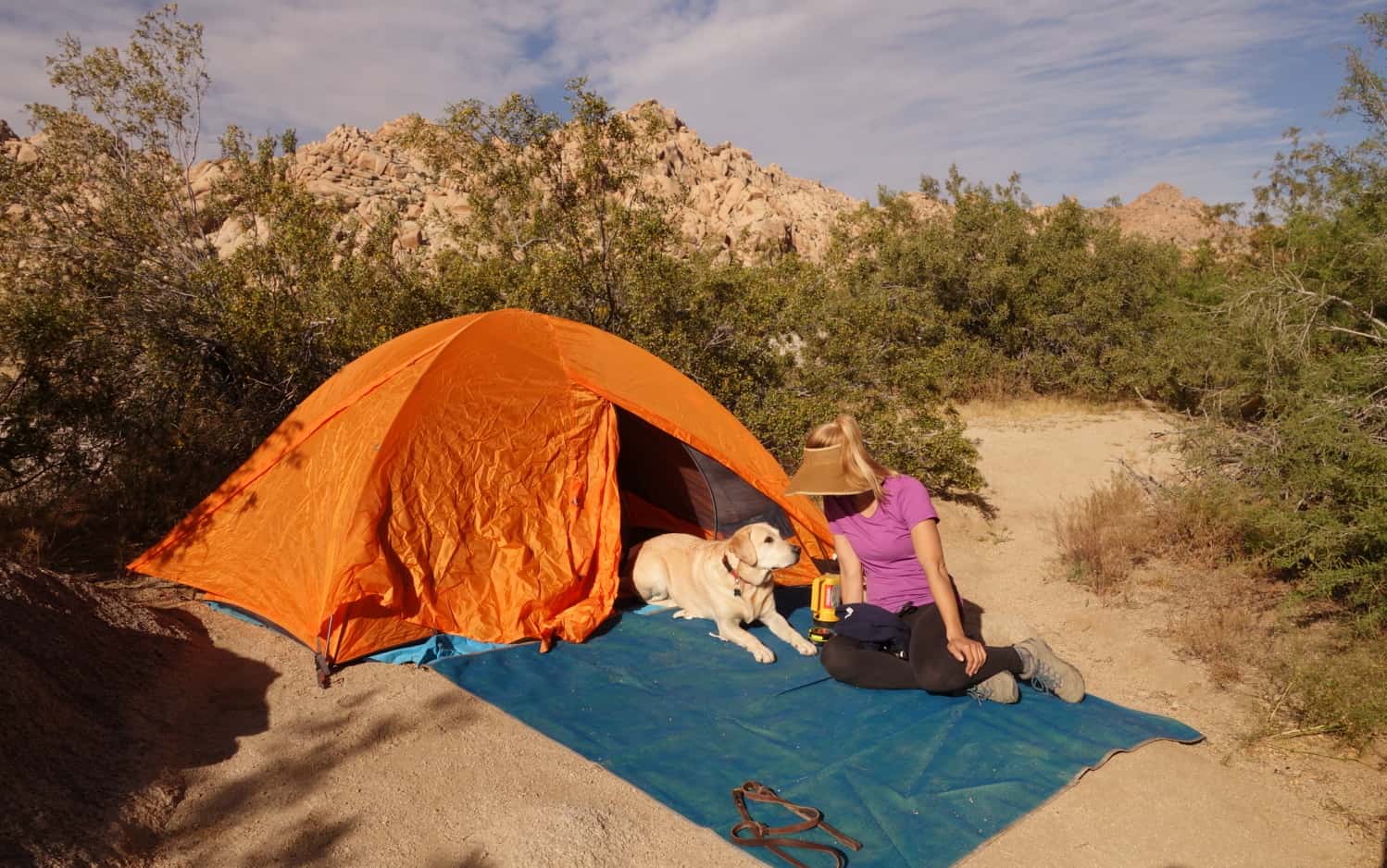
Why You Should Visit Joshua Tree National Park
Joshua Tree National Park offers a myriad of activities and experiences that cater to nature lovers, outdoor enthusiasts, and adventure seekers alike. From awe-inspiring hikes amidst towering rock formations to serene stargazing under the vast desert sky, the park captivates visitors with its unique landscapes and rich biodiversity.
In addition to hiking, visitors can explore the park’s scenic drives, rock climb on world-class formations, marvel at ancient petroglyphs, and discover the fascinating flora and fauna that call this desert wilderness home. Whether it’s a leisurely stroll through a cholla cactus garden or a challenging trek to a hidden oasis, Joshua Tree invites exploration and discovery at every turn.
Moreover, the park’s dark night skies make it a prime destination for stargazing, offering unparalleled views of the Milky Way and celestial wonders above. Camping under the desert stars provides a memorable and immersive experience, allowing visitors to connect with nature on a profound level.
As travelers venture through Joshua Tree National Park, they’re not only treated to breathtaking vistas and outdoor adventures but also given the opportunity to reconnect with the natural world and gain a deeper appreciation for the beauty and resilience of the desert landscape.
Whether it’s a day trip or an extended stay, Joshua Tree National Park promises unforgettable moments and lasting memories for all who venture into its rugged terrain. Embrace the spirit of exploration, soak in the tranquility of the desert, and let the wonders of Joshua Tree inspire your next adventure.
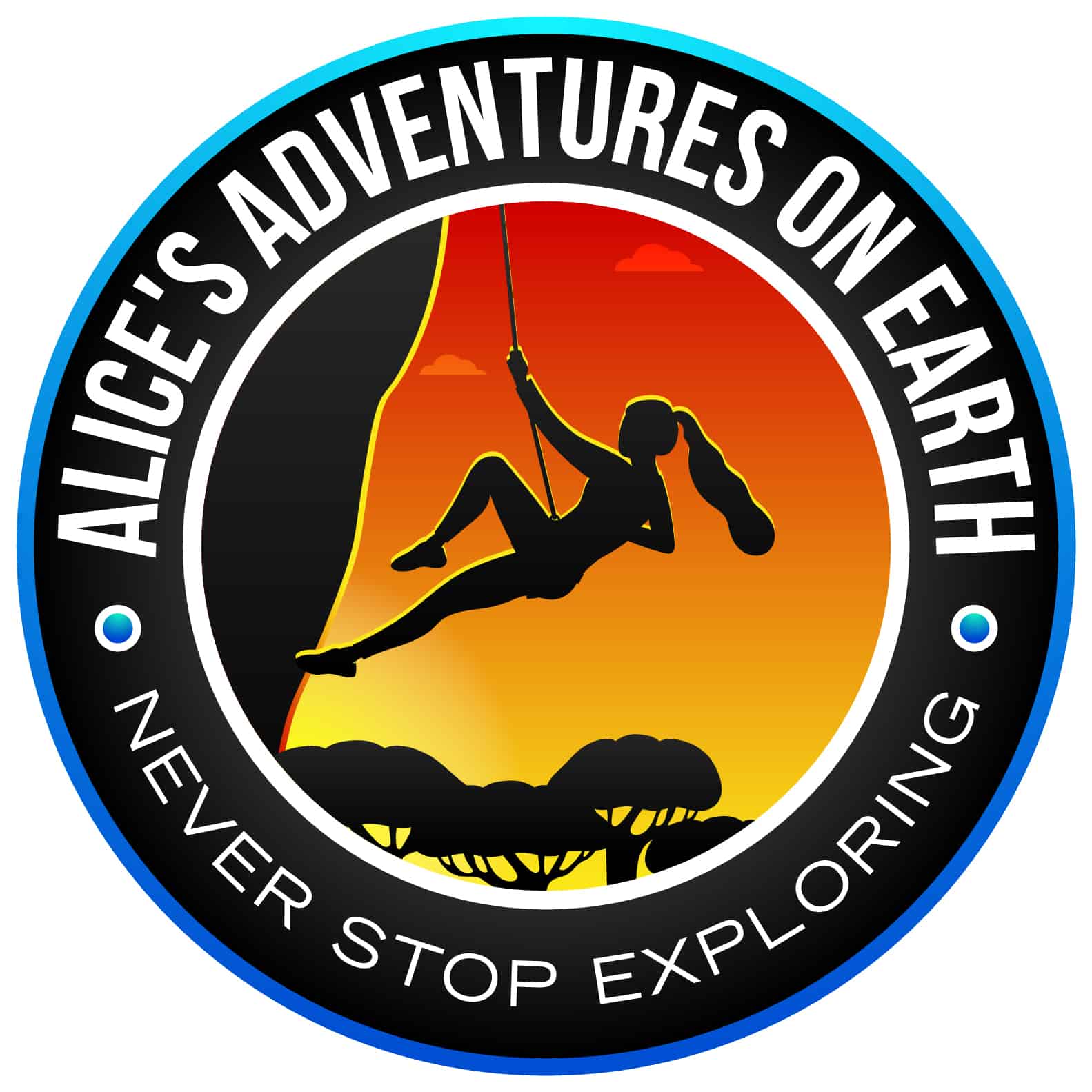



0 Comments